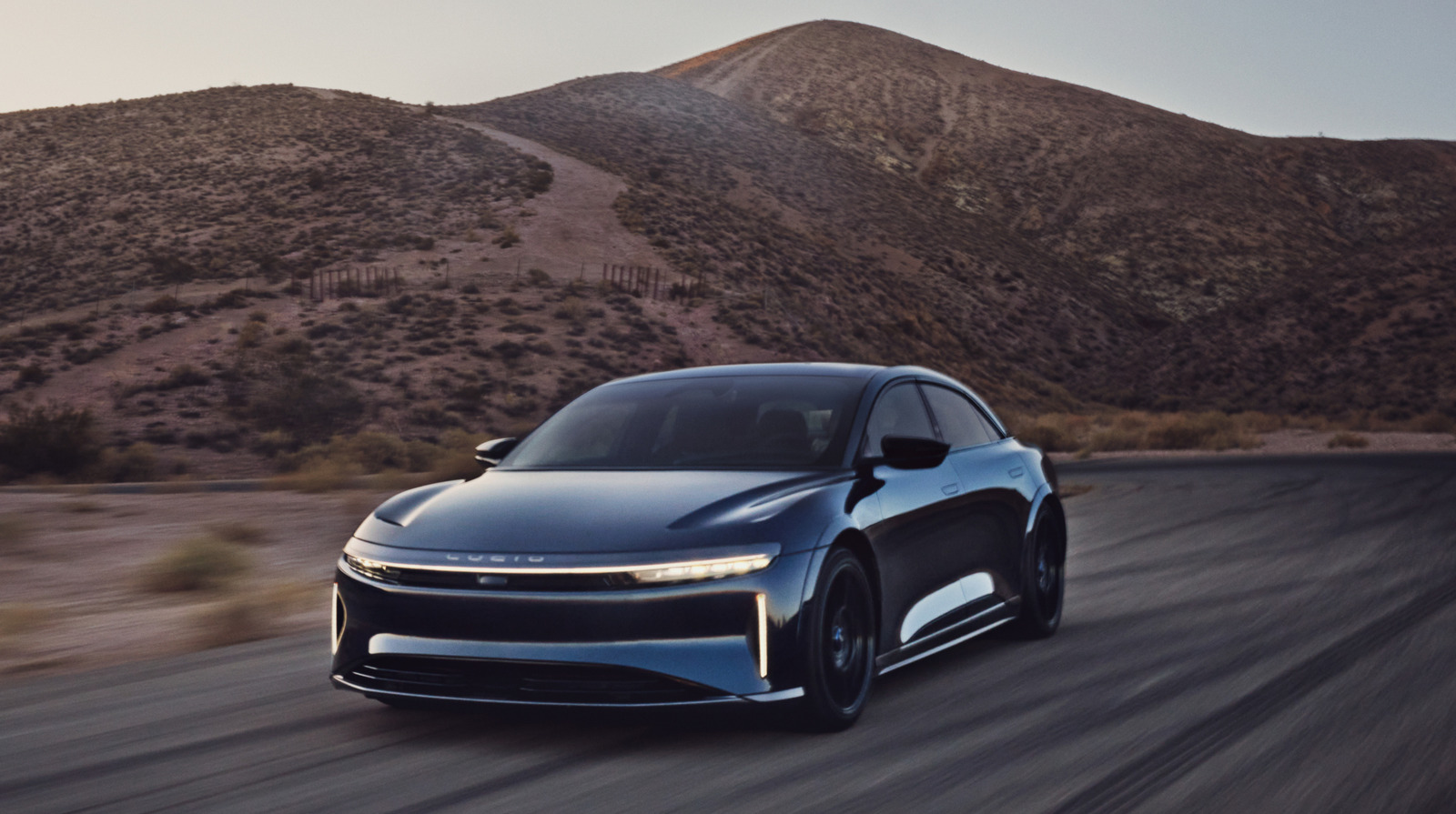Copyright SlashGear

The Lucid Air is a car of extremes. It's arguably one of the most aesthetically pleasing cars to come out this decade, certainly among electric vehicles. It boasts the greatest range out of any EV, with the Grand Touring going an incredible 1,205 km, or 749 miles, on one charge for the Guinness World Record. The "entry" level starts at around $70,000, with the Sapphire Edition scaling up to an eye-watering $249,000 MSRP. This is a top-shelf, understated luxury machine, built for range, smoothness, and an impressive image — basically a Tesla Model S Plaid in a superb-looking designer business suit. It's also one of the least reliable vehicles ever put to market, according to some owners and experts. To put it into perspective, Consumer Reports rated the Lucid Air a score of 7 out of 100 on the reliability scale, with multiple service visits within the first few years of ownership. Of course, that comes with certain caveats, first and foremost being the sheer level of innovation and detail present in the mechanical aspects of this car, particularly in its running gear. This provides the Lucid Air with a superb level of comfort and performance, but sources like Edmunds say that it comes at the cost of fit and finish — missing the forest for the trees, basically. All that said, yes, this is genuinely one of the finest super luxury sedans in recent years, but it's no consolation to the owner sitting on the side of the road (in supreme levels of comfort, at least). Is it really as bad as reviewers like Consumer Reports claim, though? The bread and butter of any EV, no matter how luxurious, is its software — the ability for everything to interface cleanly and work well. An electric motor is simplicity incarnate: a bunch of wires lead from a battery to a big cylinder that spins. That fundamental principle hasn't changed and remains as reliable as ever in the Lucid Air. It's everything connecting that power to the driver, and the driver to the road, which matters. Certainly, in the latter aspect, the Lucid Air excels. The Lucid Air, especially in Sapphire trim, boasts incredibly well-refined suspension and chassis, with owners and reviewers alike praising its ride quality, stating that it combines luxury smoothness with enough stiffness to feel sporty when it needs to. It's remarkably simple as well, with no air suspension or hyper-advanced systems that can go wrong or prematurely collapse; it just has solenoid-controlled adjustable dampers. This means it'll likely hold up well as the years tick over. Moreover, many owners report remarkably few mechanical issues with their Lucid Air, despite claims that these cars are in and out of the shop on a monthly basis. Some owners had theirs repaired under warranty or voluntarily gone in because of the several recalls they experienced, but there are people out there already teasing the six-figure mile counter with their Lucid Airs without too much trouble. Many minor complaints instead focus on small details, such as ergonomics, interactivity issues, infotainment glitches, and so on, but the company is still in its adolescence, so many of these issues are likely to be expected this early on. The major complaint that people have with the Lucid Air is the constant nickel-and-dime nature of it; no single thing seems to break more than anything else, but there are various pet peeves that add up over time. Concerning reliability, some of these issues are so severe that owners have taken their vehicles to the shop over a half-dozen times in the span of a year. It seems to be extremely hit or miss, something typically inherent to brand-new vehicles undergoing teething issues, as well as more specialized cars in general. According to owners and reviewers, this is a driver's car that was built with the discerning driver in mind, but it comes at the cost of relative unpredictability in other minor ways. These can range from mere annoyances to utterly intolerable, depending on one's sensibilities — for example, door locks that sometimes decide not to respond right away, voice assistant and other infotainment software bugs, chargers not functioning consistently with charge rates fluctuating from station to station, and random swerves from the lane-centering software. Many of these issues reside in the car's software, rather than anything mechanical in nature; thus, it can be assumed that a few bug patches may either make or break the Lucid Air for many owners. That said, is it mechanically perfect? Of course not, no car is. And it's a relatively new American-born company with proprietary software, meaning it'll take time to work out these and other bugs as they arise. But persistence pays; if these quirks can be ironed out, the Lucid Air may well come out the other side as one of the finest EVs ever built, reliability included. We tried our best to cut through the general biases for and against the Lucid Air, focusing purely on the car's construction, engineering, software development timeframe, and real-world experiences to provide the most accurate data possible. Many reviewers often cite this vehicle as being particularly unreliable, so the first thing we did was hone in on these claims and try to refute them with what owners and experts alike have claimed. We then assembled the data from dozens of sites, forums, videos, and professional articles into a more complete picture. Being that the Lucid Air is so new as of the time of this writing, it's inappropriate to judge the vehicle on long-term reliability because it's simply not been around for long enough to have owners put hard miles on it; therefore, our attention was primarily on the factors that plagued it as a relatively new vehicle on the market. Software glitches, weird idiosyncrasies, fit and finish issues, and so on can and likely will be polished out. For more comprehensive data on how well mechanical components withstand the test of time, there will be no better judge than simply waiting to see how these vehicles react over time. Our primary sources are largely derived from internet forums, review pages, YouTube in-depth views, and anatomical breakdowns to see how the car functions in real-world conditions. Always double-check to see if the software discrepancies still apply as future updates are released.



